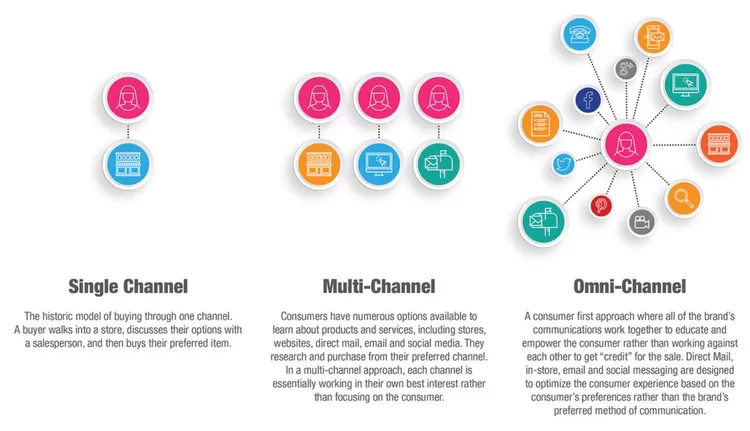Technological advancements have had a huge impact on the ecommerce world, transforming the way consumers connect with brands and empowering them to shop more effectively. Driven by the convenience of getting products delivered at home, ecommerce has now become an integral part of everyday life.
Strategic plans, competitive marketing, and a skilled workforce, all need to be accompanied by the latest technologies. These technological advancements have enabled ecommerce companies to meet people’s purchasing needs with ease and speed.
There are a lot of variations in ecommerce solutions and site hosting, but “the big five” including Magento and Shopify are generally considered the best ecommerce platforms for the majority of web shops. These have templates and a wild overload of possible functionality in them.
As they account for the majority of sites, most SaaS products are written for them, offering a huge array of top facilities, otherwise unavailable. Launching a shop is easier than ever and even taking franchises online is a popular business growth strategy. With everything available online, customers are getting used to ordering anything at the click of a button.
Now customers can track their orders, find the best deals and much more. With all this progress, new business opportunities are inevitably emerging.
So, let’s discuss some of these ecommerce technology trends and their implications for driving forward ecommerce success.
1. The necessity of Omnichannel Presence and Support
Modern shopping habits involve a process of cross-channel research, consideration, and purchase. Indeed the statistics show that 90 percent of customers expect smooth interactions across multiple channels and devices, highlighting the importance of omnichannel readiness for today’s businesses.
Making use of the right technology means providing customers with not only what they want when they want it, but where they want it too.

Here are some methods and technologies that work well in an interconnected customer journey:
- Video Chat allows your business to interact face-to-face with customers creating a personalized, cross-channel, visually demonstrative and consultative experience.
- Co-browsing is a visual engagement system bringing your agents and customers together on the same page, at the same time, allowing agents to seamlessly guide your customers through complex procedures.
- Screen Sharing is a method of interacting where your customers share their screens with your agents to resolve difficulties filling forms, completing transactions, etc.
- Document Interaction provides a platform for your agents to interact with your customers’ documents safely and includes e-signature technologies for enhanced security.
If you’re on Shopify, or plan to give it a try, check out this podcast on how you can provide improved, omnichannel experiences on your Shopify store.
2. The Need for AI Machine Learning hyper-personalisation
Hyper-personalisation is the biggest trend in ecommerce right now. Consumers have come to expect a relevant shopping experience based on their personal preferences. Discerning marketers now unilaterally appreciate that personalisation always outperforms segmentation.
The statistics show more than 78 % of customers ignore offers that aren’t hyper-personalised or based on their previous engagement with the brand. This shows how important it is for marketers to embrace personalisation and incorporate relevant content. there are significant distinctions between hyper-personalisation software providers, that the link offers you to explore.
Effective personalisation comes from understanding customers’ preferences and behaviour. Fortunately, ecommerce technology has now evolved with the aid of AI machine learning to provide that level of insight. Nearly every user action online is captured and stored, creating a vast pool of information known as big data.
Artificial Intelligence (AI) and machine learning analytics drive customer behaviour patterns, whilst simultaneously interpreting this data, meaning businesses are provided with a cycle of desires and expectations, creating endless possibilities.
Big data, machine learning, and AI have made personalisation the norm, with businesses catering their support and services to reflect this. Personalised product selection software, using hyper-personalisation product selection technology, which identifies consumer’s future behaviour, then ranks every SKU by the greatest likelihood of being purchased by “that individual consumer”. In other words, the ones they love best. CLV soars and RoR is all but eliminated.
3. The shift to mobile
Mobile platforms have increased in importance, so much so that m-commerce has emerged as a concept in its own right.
Failing to provide a mobile-oriented shopping experience will certainly not help you win potential customers who place high importance on mobile. Equipping yourself with mobile-friendly technology is crucial in maximising your chances of future success.
Consider:
- Ecommerce mobile apps. Apps offer customers continuous engagement with your brand and the chance for your customers to familiarise themselves with new and relevant purchasing opportunities.
- Location-based marketing. Use your customers’ geographical whereabouts to market products relevant to their specific location.
- VR/AR guidance. Integrating VR and AR technologies provides an immersive mobile shopping experience for your customers, connecting them with your brand in a deeper and more meaningful way.
- Internet of Things (IoT). The IoT stems from the desire to better understand consumer trends across a range of connected devices. The scope it provides for delivering personalized mobile shopping experiences to your customers is almost limitless.

4. The rise of conversational marketing
Traditional marketing channels flow only in one direction. The new concept of conversational marketing has opened up two-way communication, creating numerous opportunities for ecommerce success.
Getting information directly from customers makes more sense than attempting to predict it. You can establish a personalized, real-time, one-on-one conversation on the back of this, safe in the knowledge you truly understand your customers’ needs.
Below are some of the most efficient technologies for nurturing customer conversations:
- Chatbots. Chatbots are excellent conversational marketing tools, capable of handling multiple conversations at any one time. They provide your customers with answers, drawing on knowledge pooled from multiple channels, whilst maintaining a consistent tone for your brand.
- Live chat. Live chat allows your support teams to communicate with customers through live messaging. You can initiate a preemptive chat invitation to particular customers based on their behaviour.
- Mobile messaging. Smartphones are another way for your business to reach out to customers. With potential fatigue from the onslaught of promotional emails, talk with them through mobile messaging apps instead.
5. The implementation of AI and chatbots into customer communications
Artificial Intelligence plays an important role in everyday life, having a major impact on how we live and work. There are several examples of AI and automation tools with customer service applications for your business, including voice-powered assistants such as Apple’s Siri, Google’s Home and Amazon Echo. Research shows that 45 % of millennials are already using this type of voice-activated search for online shopping.
Chatbots and virtual assistants represent the future for businesses. Some are already integrating chatbots in their systems to improve their customer’s experience and boost their brand image.
With the help of chatbots you can order food, check-in luggage at the airport, book a hotel room, schedule your flight, and get recommendations for almost anything you can think of. The Starbucks chatbot for example gives customers details regarding their order status, payment details etc.
6. The importance of image search
Ecommerce businesses are integrating image search technology on their websites so customers can easily photograph products they are interested in and find similar examples on other sites that may be offering better deals.
Imagine someone sees a beautiful couch, but it costs too much for them. If your business offers similar products at a more reasonable price, integrating image search into your website will allow you to potentially pick up on this sale, creating an extra revenue stream.
7. The efficiency of checkout processes
Cart abandonment is the most frustrating reason for losing a sale because it means a user was considering buying your product, only to change their mind at the last minute. Data shows a 79 % global rate of cart abandonment, highlighting how big a problem it is.
One of the main reasons customers abandon their carts is the checkout procedure itself. No matter how well the lead has been nurtured, inefficient checkout processes raise the chances your users will abandon their cart.
Therefore, if you want your ecommerce company to be successful, embrace technology that provides quick and efficient checkout solutions, such as:
- Speedy mobile payment solutions, including Apple Pay and Android Pay.
- Enabling your customers to save card details, streamlining repeat purchases.
- Providing one-page, hassle-free checkouts.
- Offering a range of payment options.
Equipped with this technology, your business can alleviate any potential difficulties customers may encounter at checkout.
Keep abreast of ecommerce Technology Trends
Many successful ecommerce ventures have got to where they are on the back of the cutting-edge technology they employ. Take the opportunity to understand new technologies to deliver improved service to your customers and your company’s bottom line will reap the benefits, too.





